Adult Mosquito Surveillance
The District maintains 36 historical trapping stations set every year at the same locations for an entire season. There is at least one trapping station in each subscribing municipality. Each trapping station uses two types of traps to collect mosquitoes. There are also 19 resting box sites scattered along the New Hampshire border and in areas of historic EEE risk.
The stations are generally located at municipal-owned facilities which are secure, have access to electrical power and are within the general vicinity of major population centers. The traps operate from mid-May through October 1st, with one collection cycle per week, each cycle lasting 24 hours. Trap contents are collected at the end of each cycle and all adult female mosquitoes are identified, recorded with certain species sent for DPH Arboviral Testing.
If you encounter any of these traps, please do not disturb them. If you have additional questions please contact us.
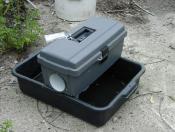 Gravid Traps
Gravid Traps
The Reiter-Cummings Gravid Trap is our principal WNV detection tool. This trap is designed to attract container-breeding mosquitoes including Culex pipiens and Cx. restuans, the key carriers of West Nile Virus (WNV). The trap is baited with aged organic material-filled water, held below in a pan, to attract female mosquitoes for egg laying. These blood-fed females come to lay their eggs on the water’s surface and when they approach the trap’s underside opening, they are drawn into the collection container. The contents are later removed. After their identification, all WNV-vector species are separated and sent to the state lab to be tested for the presence of viruses.
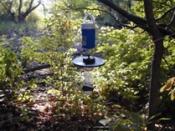 CDC/CO2 Light Traps
CDC/CO2 Light Traps
At the end of 2015, we replaced all “NJ traps” with more current and widely adopted design known as CDC/CO2 Light Trap. This trap is used to attract mosquitoes that feed on humans/mammals. Light and carbon-dioxide gas (the same chemical we exhale) is released from a pressurized cylinder into a hose located at the top of the trap. As mosquitoes approach the gas released at the hose’s opening, they are drawn inside by an internal fan, then blown into a container that hangs below. With this trap, nearly all mosquito species in a community are collected during that night. Because the traps are placed at the same locations every year, population trends can be predicted, studied and compared between years, as well as during the year.
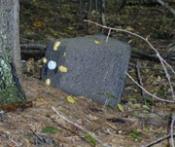 Resting Boxes
Resting Boxes
Resting boxes are designed to simulate the tree holes and cavities where yet another species of disease-carrier mosquitoes normally rest during the day after they feed on blood. Due to the behavior and habitats preferred by this species, resting boxes are not placed at the historical trapping stations. Instead, these are situated in the vicinity of cedar and maple swamps where Culiseta melanura resides. Cs. melanura or the “Red Maple/Cedar Swamp Mosquito” is a primary vector of Eastern Equine Encephalitis (EEE). Resting boxes are visited twice weekly from mid-June through the end of September; Cs. melanura, and the closely related Cs. morsitans, are gathered, identified, tallied, then separated to be later tested for the presence of viruses.
Other types of traps are constantly being developed and used to search for exotic and invasive mosquito species.
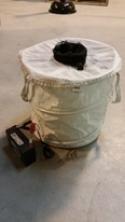 BG Traps
BG Traps
The BG-Sentinel Trap mimics the motions and chemicals produced by a human host. The attractants are given off by various lures through a dispenser which releases a combination of lactic acid, octenol, ammonia, and caproic acid, CO2; substances found on human skin or released through breath. These traps were specifically developed for attracting Aedes albopictus. The trap consists of an easy-to-transport, collapsible white cylinder with white mesh covering the top. In the middle of the mesh cover is a black funnel through which a down draft is created by a 12V DC fan that causes mosquitoes in the vicinity of the opening to be drawn into a catch bag. The catch bag is located above the suction fan to avoid damage to specimens passing through the fan. The air then exits the trap through the mesh top. We plan on using a few of these traps to monitor potential movement of Ae. albopictus into this area. Adult female mosquitoes have been collected in traps from our district since 2021 in Manchester-by-the-Sea, Nahant and Gloucester. As of 2023, these collections seem to be single occurrences possibly brought to the coastline by boat or freight and may not yet be permanently settled. Research is ongoing.
Octenol is short for 1-Octen-3-ol and also known as mushroom alcohol or ox breath. It is a chemical that attracts biting insects such as mosquitoes and greenhead flies. It is contained in ox breath, human breath and sweat. Octenol is used, sometimes in combination with carbon dioxide, to attract insects in order to kill them with certain electronic devices. Its odor has been described as moldy, meaty or vaguely similar to anise or licorice.
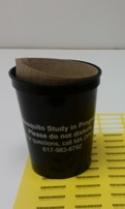 Ovitraps
Ovitraps
An ovitrap consists of a black cylinder with a piece of brown filter paper submerged into water in a plastic cup. Ovitraps mimic the preferred breeding site for container and/or tree hole breeding mosquitoes, including Ohlerotatus japonicus, Oc. triseriatus and Aedes albopictus.
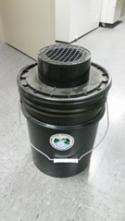 CDC Autocidal Gravid Ovitrap (CDC-AGO)
CDC Autocidal Gravid Ovitrap (CDC-AGO)
The CDC Autocidal Gravid Ovitrap is used for the surveillance and non-chemical area-wide control of Ae. albopictus and Culex spp. It is composed of a black bucket filled with water up to a specific depth. Gravid female Aedes and Culex mosquitoes are attracted to the standing water inside and seek to lay their eggs on a hard surface right at the water line. The hard surface inside is coated with a sticky, fly-paper like substance. There is a screen preventing the females from reaching the water. As they keep trying to get to the water, they tire and need to rest. When they choose to rest on the glue surface they then get stuck and die. These traps can be deployed in the field for 2 months without maintenance or servicing. They do not use insecticides. They are relatively inexpensive and can be hidden in vegetation and placed around houses.
Supplemental Trapping:
To determine whether infected bridge vectors are present, portable CDC-CO2 traps are often placed at locations when infected Cs. melanura and/or Cx. pipiens/restuans mosquitoes have been collected. These traps “supplemental traps” collect other species of mosquitoes that are attracted to and would bite humans/mammals. These mosquitoes are sent for testing. Knowing the “infection status” of bridge vectors in EEE/WNV known habitats can result in more effective targeted adulticiding responses.
After the 1st positive WNV/EEE primary vector species (bird biters) in any municipality:
- Radius of collection
- Distance from historic trap
- Topography
- Human population density
- Bridge vector potential breeding sites
- Schools/parks/recreation areas
- Trap Security
- Wetland/wooded/shaded areas
Collections are then sent for DPH Arboviral Testing.
